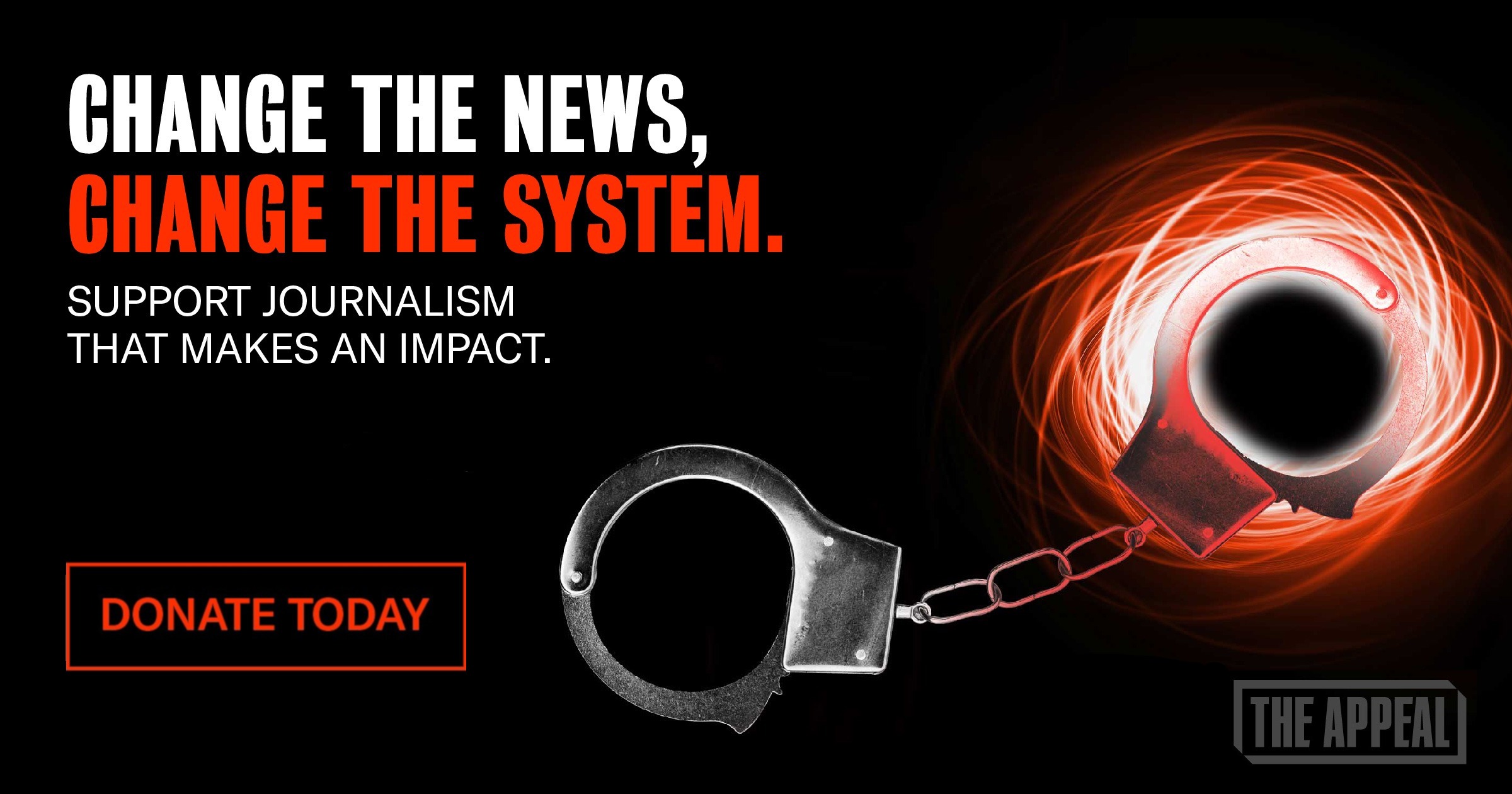Why Women’s Wrongful Convictions Are So Difficult to Overcome
Outdated stereotypes and crimes that never occurred create unique challenges for women seeking exoneration.

When Cynthia Sommer’s husband, Todd, died in 2002, the medical examiner said a cardiac arrhythmia was responsible. But prosecutors charged Sommer with murder on the theory she had poisoned her husband, pointing at her trial to the fact that Sommer underwent a breast augmentation, once participated in a wet T-shirt contest, and pursued sexual partners after her husband’s death. The implication was Sommer was not a grieving widow but reveling in her newfound sexual freedom. She was convicted but subsequently won a new trial, after which the charges were dismissed.
Sommer is just one of many innocent people who have been wrongfully convicted of a crime. Experts believe only a small percentage will ever be exonerated. But women like Sommer are rarely the face of this issue. Because of this, the specific contours of women’s wrongful convictions can go unnoticed, obscuring the fact that, while exonerations are already difficult to achieve, exonerating women presents its unique challenges.
According to the National Registry of Exonerations, only 285 women have managed to be exonerated since 1989, compared with more than 3,000 men. But experts say that isn’t indicative of the true number of wrongful convictions.
There is “no question” it’s harder for women to achieve exonerations compared with men, according to Marissa Boyers Bluestine, assistant director of the Quattrone Center for the Fair Administration of Justice at the University of Pennsylvania Law School and the former executive director of the Pennsylvania Innocence Project. Regarding how many wrongfully convicted women have yet to achieve exonerations, “It’s not even a tip of an iceberg, it’s a tip of a tip of an iceberg,” Bluestone said.

Challenges in these cases are inextricably linked to society’s expectations of women—caregiving, sexual modesty, nonviolent behavior, and more. Prosecutors often accuse wrongfully convicted women of committing crimes against loved ones, leading them to suffer doubly—first at a tragedy within their own lives and second at being wrongfully convicted of causing it.
Here are some of those key characteristics that make women’s wrongful convictions unique—and so difficult to overcome:
There was no crime
The most significant difference between wrongful convictions of men and women is the nature of the crimes for which they are convicted. In most cases of exonerated men, a crime occurred, but prosecutors charged the wrong person. But in most cases of wrongfully convicted women—nearly three-quarters of them—no crime occurred. Only 37 percent of exonerated men were convicted of crimes that did not happen.
“It seems that women may be more vulnerable to no-crime wrongful convictions because of gender biases,” said Jessica S. Henry, a professor at Montclair State University and author of the book “Smoke But No Fire: Convicting the Innocent of Crimes that Never Happened.” “The first inflection point often comes in the designation of an event as a crime.”
Once that happens, “we see those gender stereotypes kicking in,” Henry said.
“No-crime cases are, I think in part, a reflection of certain anxieties that we have about women’s roles in society,” said Deborah Tuerkheimer, a professor at Northwestern University School of Law specializing in gender and the criminal legal system. Tuerkheimer points to just-world theory, the cognitive bias humans have that assumes an order to the world and that bad actors will face consequences. But sometimes, tragedies—like a baby dying while in a woman’s care—simply are tragedies. And this can trigger dissonance.
“We’re going to kind of cohere a way of understanding the world that allows us to rest easier and to go about our business just knowing that if we act right, good things will come to us,” said Tuerkheimer.
Perhaps that’s why, as investigators look for reasons that don’t exist, a common contributor to women’s wrongful convictions is junk science, often in the form of incorrect medical diagnoses. The incredibly controversial diagnosis of Shaken Baby Syndrome (“SBS”), a finding that indicates an infant was violently shaken to death, has been used against numerous now-exonerated women. But many are still incarcerated, like Tasha Shelby, who was convicted in 2000 of killing her fiancé’s son by shaking him to death, despite a trove of records suggesting the child died of a seizure, and the recantation of the medical examiner who initially ruled the death a homicide.
Thus, no evidence
Quite simply, without a crime, there may be no evidence to indicate an alternative hypothesis for police to investigate or a defendant’s lawyer to raise during a trial. It becomes, instead, a credibility fight.
In cases where the prosecution argues a mother killed her child, “How do you say, ‘No, I was really a great mother?’ It becomes a very difficult task to disprove the negative,” said Henry.
Once a woman has been wrongfully convicted of a crime that never occurred, she faces an extraordinary uphill battle: many of the paths to exoneration are closed off, such as tracking down an alternate perpetrator, testing DNA evidence, or finding new evidence.
“You don’t have not only the [exculpatory] evidence, but also the rhetorical power of the unapprehended perpetrator,” said Tuerkheimer. “They don’t have that very powerful, persuasive argument, which is to say, let’s find the real person who did this.”
Additionally, some of the most popular reform measures related to DNA testing or eyewitness identification procedures would not impact most women’s wrongful convictions.
The worst crime of all: being a ‘bad mother’
In 1996, Kristine Bunch was convicted in Indiana of killing her three-year-old son by starting a fire. At her sentencing, where the 22-year-old was pregnant, the judge told her: “I understand that you have arranged to have yourself impregnated,” adding: “You thought it would work to your advantage somehow in this process. It will not.”
“They were so quick to be judgmental about her,” said Judy Royal, former co-director of the Women’s Project at the Center on Wrongful Convictions at Northwestern University Law School, because Bunch was “living in a trailer, she’s an unwed mother, [and] she liked to have a good time sometimes—who doesn’t?”
“There’s extra motivation to punish the bad mother,” said Royal. Bunch was exonerated 17 years later in light of evidence indicating the fire was accidental.
The perceived importance of child-rearing plays a crucial role in why a little more than a quarter of women exonerees tracked by the National Registry of Exonerations are wrongfully convicted of harming children—and could also be why child welfare misconduct is significantly more common in exonerated women’s cases than men’s.
The impulse to blame a female caregiver for failing to be a perfect mother can blind practitioners and prosecutors to other potential causes of death, like medical issues or other sources of a house fire. The fact a child was in a woman’s care can be enough to transform her from a grieving mother or caregiver to a suspect.
“Women are the caretakers for children, and so, therefore, they’re the ones who are last with the child,” said Bluestine. When something goes wrong, they are the easiest to blame.
Potential tendency to cooperate
The instinct to cooperate with law enforcement can permeate women’s wrongful convictions and the success of their exoneration efforts—although exactly how it affects convictions is unclear.
“Women will often plead guilty because they need to get out,” said Henry. “They need to get back to their families in ways that may be different from their male counterparts.”
While there isn’t data on women’s false confessions, research has found those with deference to authority and compliant personalities—traits women are socialized to have—are more at risk of falsely confessing.
“Coercive dynamics tend to land more forcefully and more effectively with more vulnerable populations, and then you add to that the ways in which we’re socialized in gendered ways,” said Tuerkheimer.
Take, for instance, Melissa Lucio, who was convicted of killing her two-year-old daughter, and whose pending execution was stayed last year. Only two hours after her daughter died following an apparent fall down the stairs, police interrogated Lucio for five hours, during which Lucio vehemently denied abusing her child, asserting her innocence more than 100 times. Eventually, under pressure, Lucio confessed, saying, “What do you want me to say? I’m responsible for it.”
Lucio, who the Innocence Project now represents, acquiesced out of desperation for her interrogation to stop.
Guilt-presumptive and manipulative interrogation practices affect male and female interrogees alike. But a false confession may come easier for women suspects, whom investigators often interrogate at times of heightened vulnerability.
“If you’re a woman and your child has just died, for example, you are so grief-stricken and traumatized and confused, especially if it’s a sudden, mysterious death, and so you are very vulnerable to an aggressive interrogation,” Royal said.
Sexual stereotypes
When Beverly Monroe went to her longtime boyfriend’s house one day in 1992, she found him dead. He appeared to have died by suicide. But an investigating detective developed a theory that Monroe killed her boyfriend because of his history of affairs. The detective “believed she must have been so enraged by the infidelity of her partner that it made perfect sense that she would murder him,” according to Henry. “He was like a dog with a bone— he wouldn’t let it go.” Monroe was exonerated in 2003, partly because the prosecution had illegally withheld evidence indicating the death was a suicide.
Detectives and prosecutors often trot out sexuality-related archetypes in cases in which women are wrongfully convicted: for Monroe, she was a vengeful, jealous, wronged female partner; for Cynthia Sommer, it was that she wanted to live a life of promiscuity.
“When women fall short of [societal standards], that’s going to be a real problem in every decision where discretion is baked into the system, which is all along the line,” said Tuerkheimer.
Prosecutors rely on sexual tropes of promiscuous or vengeful women “to be able to explain behavior they don’t otherwise have an explanation for,” according to Bluestine.
These sexual tropes can also morph a woman from a victim to a villain. In 1997, Fancy Figueroa, a teenager in New York, was raped and sought a medical examination; once tests revealed that Figueroa was pregnant, police accused her of falsifying her rape allegation to cover up her pregnancy and pressured her to plead guilty to filing a false report.
The perceived deviance of same-sex attraction has similarly been used as a proxy for guilt. Bite mark evidence, a debunked science, was crucial to the 2001 wrongful convictions of Leigh Stubbs and Tammy Vance in Mississippi for assaulting another young woman who overdosed. Much of the trial focused on Stubbs and Vance’s sexualities.
“One of the arguments with bite marks was that lesbians bite … She’s a female, it’s her bite mark, therefore she’s a lesbian and she was biting,” said Bluestine.
It is impossible to disentangle all how gender discrimination infects the wrongful convictions of women. Still, experts agree: failing to comply with traditional expectations of womanhood can be seen as criminal enough to find wrongdoing where there was none.
